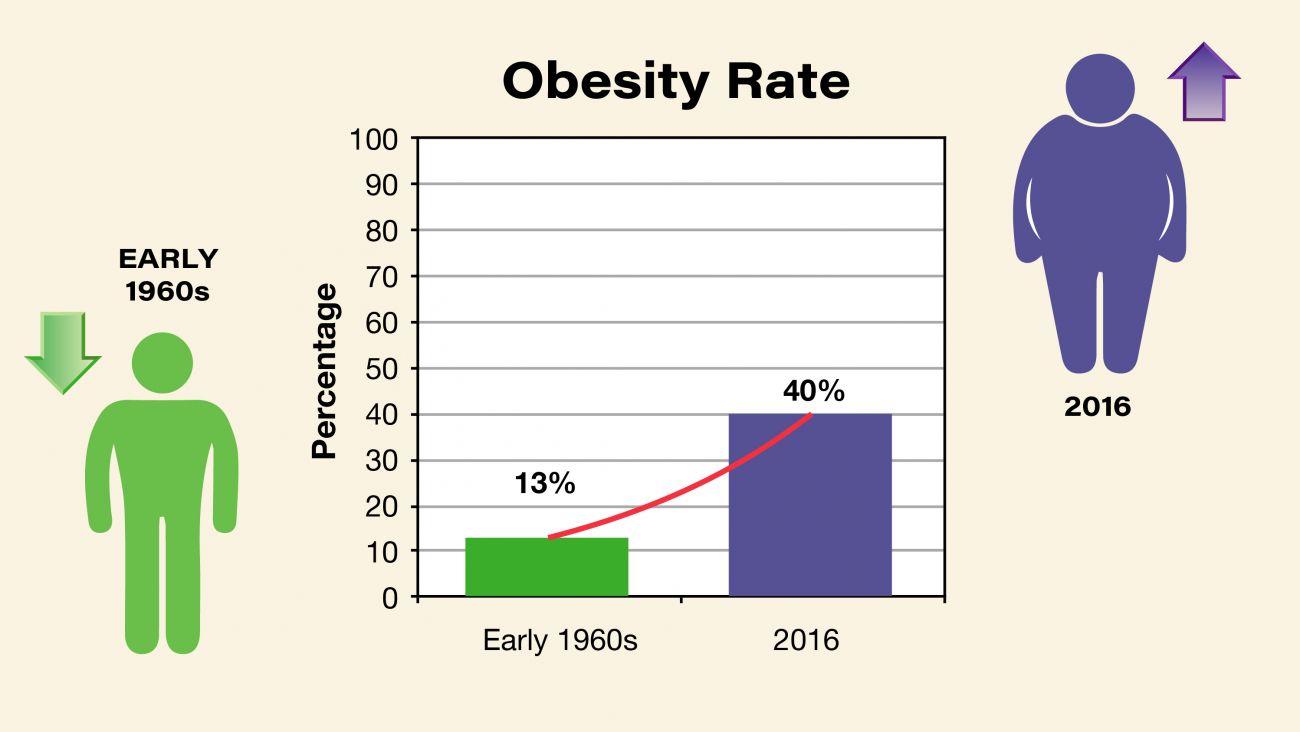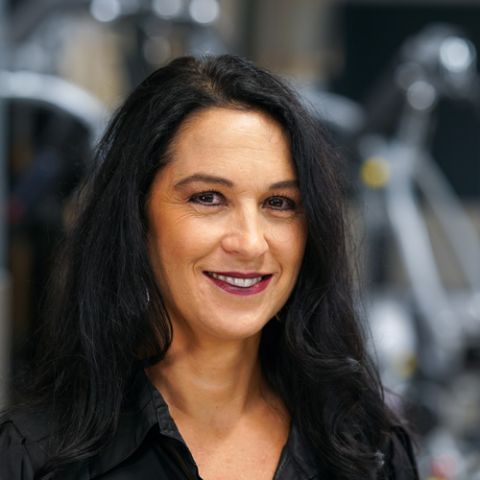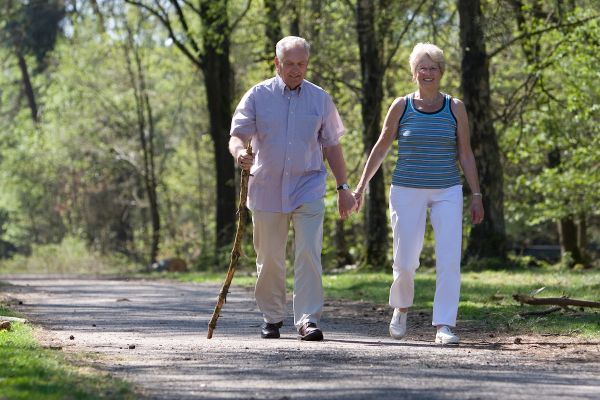This is the third in a series of three articles about the rising number of cancers caused by overweight and obesity. Here are the first and second articles in case you missed them.
Americans are heavier than ever, and there's no sign that the trend is slowing down. Those pounds come at a price: About 40% of all cancers diagnosed in the U.S. are now linked to overweight or obesity.
It's no secret that Americans today are less active than previous generations and that their eating habits are generally poor. Think about this:
- Most Americans buy meals or snacks outside the home 5.8 times a week. Research shows that excess calories eaten in meals outside the home are "a major contributor to obesity." (Between 1986-2016, the calories in an average fast-food entrée increased from 326 to 416.)
- The vast majority of Americans do not eat enough fruits and vegetables.
- 32% of American adults are not physically active in their leisure time.
Cancer Prevention: Time to Change
"If you ask people what they can do to prevent cancer, very few would say, 'Eat healthy foods,'" says Linda Leising, RDN, CSO, CDN, former Senior Clinical Dietitian at Roswell Park. "But about one-third of all cancers could be prevented if people could reach and maintain a healthy weight, choose healthy foods, avoid alcohol and not smoke. I don't think a lot of people realize that.
"The time to talk about that is not after a cancer diagnosis. We don't want to engage in a conversation about that when someone's in the hospital, right after they have found out they have cancer. In the outpatient setting, in the community — that's where the opportunity is."
Yet surveys show that healthcare providers are uncomfortable talking about weight management with patients who are overweight or obese. "The first thing they ask you to do at the doctor's office is step on the scale, and a lot of people don't want to do that," says Leising. "It's not easy. But healthcare providers need to have an open conversation with people about the importance of reaching and maintaining a healthy weight."
Simple First Steps
"There's a lot of evidence that for someone who's overweight, losing even a small amount — five pounds, 10 pounds — can reduce the chances that they'll be diagnosed with cancer," adds Leising. "Studies show that the more overweight people are, the greater their cancer risk. If overweight people lose just 3-7% of their weight and keep it off, they'll reduce their risk of developing type 2 diabetes, heart disease and up to 13 types of cancer. And there are very simple things people can do to try to live a healthier life."
If you're 19 or older and need to lose extra pounds, use this calculator to find out how many calories you should consume.
Here are three tips to help you get started:
1. Don't Drink Your Calories
"One of the easiest things to do is drink more water and avoid drinks that are adding calories," Leising advises. "For some people, that will cut hundreds of calories a day." (Keep in mind that some fancy coffee drinks pack as many calories as a Big Mac or a doughnut.) For flavor, try unsweetened tea, water flavored with fresh fruit, or unsweetened seltzers — now offered in such exotic flavors as peach-mango, coconut and blackberry-cucumber.
And forget the diet soda. "The long-term effects of artificial sweeteners haven't been studied as much as regular sweeteners," says Leising. "Your body does not handle diet soda the same way it handles water." There's also evidence that diet sodas can increase the risk of type 2 diabetes and of metabolic syndrome, which can raise the risk of type 2 diabetes, heart disease and stroke.
2. Pack in the Nutrients
"Eat what we call nutrient-dense foods, like fruits and vegetables," says Leising. "They're lower in calories. Fresh is best, but they can be canned or frozen."
If you're tempted to pour a glass of juice or whip up a smoothie, hold on a sec. "For a lot of people, if you're not chewing, you're not really eating, so if you're trying to lose weight, juicing is more than likely not going to help. It's much easier to drink 500 calories than it is to eat 500 calories' worth of food.
"You can make a juice drink and drink it quickly and still not feel satisfied, because you didn't chew your food and get the feeling of fullness or satisfaction you get with eating solid food."
Here are some ways to add more whole fruits and veggies to your diet:
- Wash and prepare fruits and veggies in advance and keep them handy for quick snacks: a bowl of fruit, carrot and celery sticks, slices of green or red bell pepper or pea pods. Add hummus as a healthy dip.
- For cool treats, try frozen banana slices, grapes or strawberries.
- Add vegetables to soups, stews, casseroles or rice.
- Add fresh fruits to your morning cereal or stir veggies into an omelet.
- Top sandwiches with lettuce, fresh tomato, sprouts or cucumber.
3. Get Going!
"Can physical activity decrease the risk of death for many types of cancer? Yes," says Rikki Cannioto, PhD, EdD, Department of Cancer Prevention and Control. "The evidence is strongest for breast, colon and prostate, but there is increasing evidence that physical activity also decreases the risk of dying from many other types of cancer."
Cannioto was lead author of a study showing that cancer patients who exercised regularly before and after their diagnosis were 40% more likely to survive than patients who did not exercise. The study, which involved 5,807 patients enrolled in Roswell Park's Data Bank and BioRepository, demonstrated that those who exercised had a lower risk of death from cancer even if they were overweight, obese, or smokers, or had advanced-stage disease.
In addition to lower risk of death, exercise "provides several benefits, including improved quality of life, better sleep, decreased depression and anxiety, decreased pain and cancer-related fatigue," says Cannioto. "Some data also suggest that physical activity during treatment helps alleviate treatment-related toxicities (side effects)."
Never miss another Cancer Talk blog!
Sign up to receive our monthly Cancer Talk e-newsletter.
What kind of exercise makes a difference? And how much? "Ideally, you want to meet the federal government's physical activity guidelines, which means racking up at least 150 minutes per week at moderate intensity," she says. "One example of moderate-intensity activity would be walking at a brisk pace — about three miles an hour for 30 minutes a day, five days a week.
"But meeting those guidelines can be overwhelming for people, especially cancer patients," she acknowledges. "Fortunately, our most recent data show that survivors who do less than that still experience a protective benefit. Patients who reported walking on a regular basis and doing nothing else — just walking for exercise — saw a significant decrease in mortality.
"The important thing is that you're doing something on a regular basis — not once a month, but every week. Aerobic exercise and muscle-strengthening exercises are both important. Generally speaking, we want people to engage in at least five- to 10-minute bouts of exercise at a time — for example, getting up from your desk on your break and walking briskly around the block."
Be sure to speak with your doctor before starting any exercise program.
Ready to Make a Change?
If you're overweight or obese, it's time to take steps toward a healthier life. Here are some places to start:
- If you're a Roswell Park patient, ask your medical team to refer you to a dietitian in our Clinical Nutrition Department for assistance in adopting a healthy diet.
- Get inspired by browsing healthy recipes. We suggest:
— American Institute for Cancer Research healthy recipes
— Cook for Your Life
— American Heart Association recipes - Get creative ideas for increasing your activity level.
Future Cancer Talk articles will focus on Roswell Park research aimed at better understanding the link between cancer and obesity.










